Search
Search Results
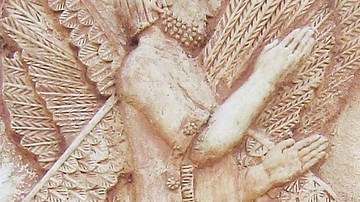
Definition
Cyrus the Great
Cyrus II (d. 530 BCE), also known as Cyrus the Great, was the fourth king of Anshan and the first king of the Achaemenid Empire. Cyrus led several military campaigns against the most powerful kingdoms of the time, including Media, Lydia...
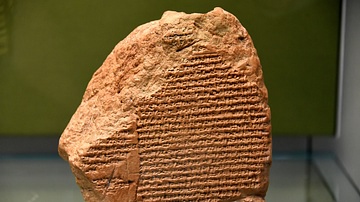
Image
Nabonidus Chronicle
The fall of a dynasty! Nabonidus' faults and absence were recorded alongside events of his reign. By the autumn of 539 BCE,, Babylon has surrendered to the army of king Cyrus to become part of the growing Achaemenid Empire. From Babylon...
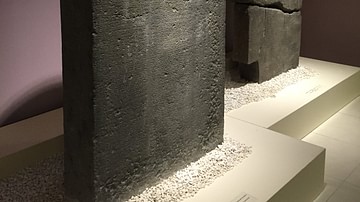
Image
Tablets with King Nabonidus Inscriptions, Harran
These large tablets comes from the 6th-5th century BCE. They contain the inscriptions from King Nabonidus, who was the last king of the Neo-Babylonian Empire, reigning from 556–539 BC. These tablets were found in Harran - near Sanliurfa...
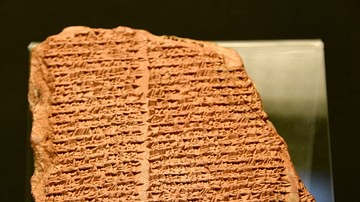
Image
Verse Account of King Nabonidus
"He looks at those effigies and utters blasphemes...". During the reign of Nabonidus (556-539 BCE), Babylon fell to the Persian king Cyrus the Great. Nabonidus' reign was a troubled one. His unpopularity led to this poem, ridiculing Nabonidus...
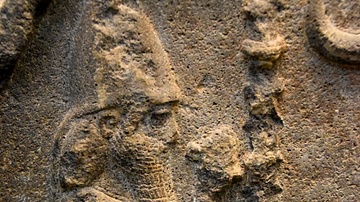
Image
The Babylonian King Nabonidus
This is a detail of a Babylonian basalt stele. Here the figure of the king, Nabonidus was carved in relief on the obverse side of the stele. The king stands and wears a conical headdress as well as a long fringed garment. The right hand is...
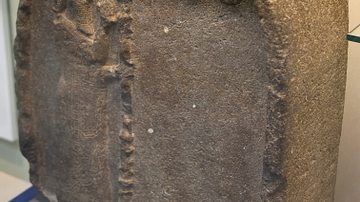
Image
Stela of Nabonidus
Here, Nabonidus (reigned 556-539 BCE) wears the traditional dress of a Babylonian king, holding objects symbolizing justice and power. Before him are the star of Ishtar, the winged-disc of Shamash, and the crescent moon god Sin, to whom Nabonidus...
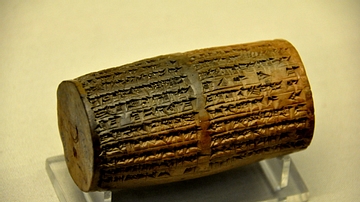
Image
King Nabonidus Clay Cylinder from Ur
This clay document tells us how Nabonidus (the last king of Babylon) built and reconstructed the temple of Sin, the moon God, at Ur. It also mentions a prayer for the king and Beslshazzar, his son. From Ur, neo-Babylonian era, 555-539 BCE...
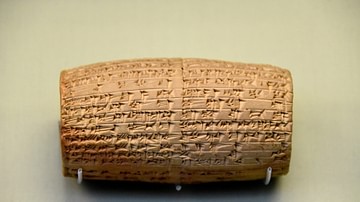
Image
Mesopotamian Cylinder Naming Nabonidus & Sacred Buildings
Clay cylinder with Babylonian characters, recording the restoration of Sin's ziggurat at Ur and also asking him to protect Nabonidus and his son Belshazzar. From Ur, Southern Mesopotamia, modern-day Iraq. Neo-Babylonian Period, reign of Nabonidus...

Image
Stele of King Nabonidus
It narrates the various religious activities of king Nabonidus and contains the harassment of enemies to the city of Babylon and nearby cities and the renovation of these cities by him as well as homage paid to Gods welling in them. The stele...
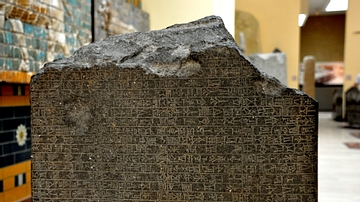
Image
Stele of King Nabonidus, a close-up view
It narrates the various religious activities of king Nabonidus and contains the harassment of enemies to the city of Babylon and nearby cities and the renovation of these cities by him as well as homage paid to Gods welling in them. The stele...